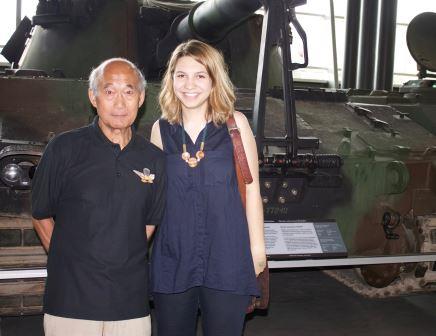An Order of Canada recipient and former member of the Canadian Armed Forces (CAF), Ted has dedicated his life to humanitarian and peacekeeping work. Ted shared with me key experiences that culminated in his contributions to the Anti-personnel mines - friend or foe? ICRC publication, the Ottawa Treaty, and continued voluntary service with the Red Cross Red Crescent Movement.
In 1995 Ted was asked by the ICRC to support their work on anti-personnel landmines and contribution to the International Campaign to Ban Landmines. Ted’s response? “I think I’ll do it as a volunteer…because isn’t that one of your principles?”
Because of the changing nature of conflict, victims of anti-personnel landmines were normally civilians. Ted played a key role in the contributions of the ICRC, underlining the principles of International Humanitarian Law (IHL), to prevent and alleviate human suffering, including the protection of civilians and children. Ted looked beyond the treaty and also highlighted the need for a plan and initiative for victims of explosive remnants of war. The ICRC publication came out in 1996 followed by the signing of the Ottawa Treaty in 1997.
Ted continued volunteering with the ICRC and worked in Geneva from 2001 to 2003 on the Missing People Project. He also stayed on for an additional year with the Communications Department as an advisor on IHL and humanitarian diplomacy. After returning from the ICRC in 2004, Ted supported the Canadian Red Cross Humanitarian Issues Program (HIP), particularly the IHL program. That program was my first engagement with the Red Cross as a volunteer and ultimately facilitated my continued involvement with the Movement. Ted supported the program for over a decade. As it evolved he continued to volunteer for various Red Cross events and support the Exploring Humanitarian Law (EHL) program, where I volunteer today.
Ted reflected on the importance of humanitarian law and engaging the general public – young people in particular – through EHL to “[fill] a gap in preparing our future leaders.”
Ted continues his commitment to uphold the work of IHL, peace and security that surrounds his legacy and the model landmine. In addition to IHL/EHL, Ted supported Canadian Red Cross participation in the annual Canadian Armed Forces Field Training Exercise Maple Resolve for the past five years, worked as an information analyst for the Nepal earthquake from April to July 2015, and supported Security in Complex Environments workshops as well as other Red Cross trainings.
I first met, and was inspired by, Ted in Ottawa during my internship with the Canadian Red Cross (Government Relations, Movement Relations and International Humanitarian Law); however, his contributions to International Humanitarian Law youth programming had a profound impact on my life nearly five years before.

As one of the newest Red Crossers, I was honoured to chat with one of our oldest. When I was 15-years-old, the seven fundamental principles were defining, and shaped my worldview. Now, five years later those principles have become central to my day-to-day interactions. Ted exemplifies the values I hold dear and has left a wonderful legacy on me. My intention is to leave a similar legacy of humanitarianism, kindness, a commitment to voluntary service, a passion for adventure and peaceful diplomacy - to leave the world a little better than I found it.
Those interested in Red Cross history can also share your own Red Cross stories, whether the Red Cross played a role in your life of if you have a special item to share, as well as give in tribute to recognize those who have left important legacies.

